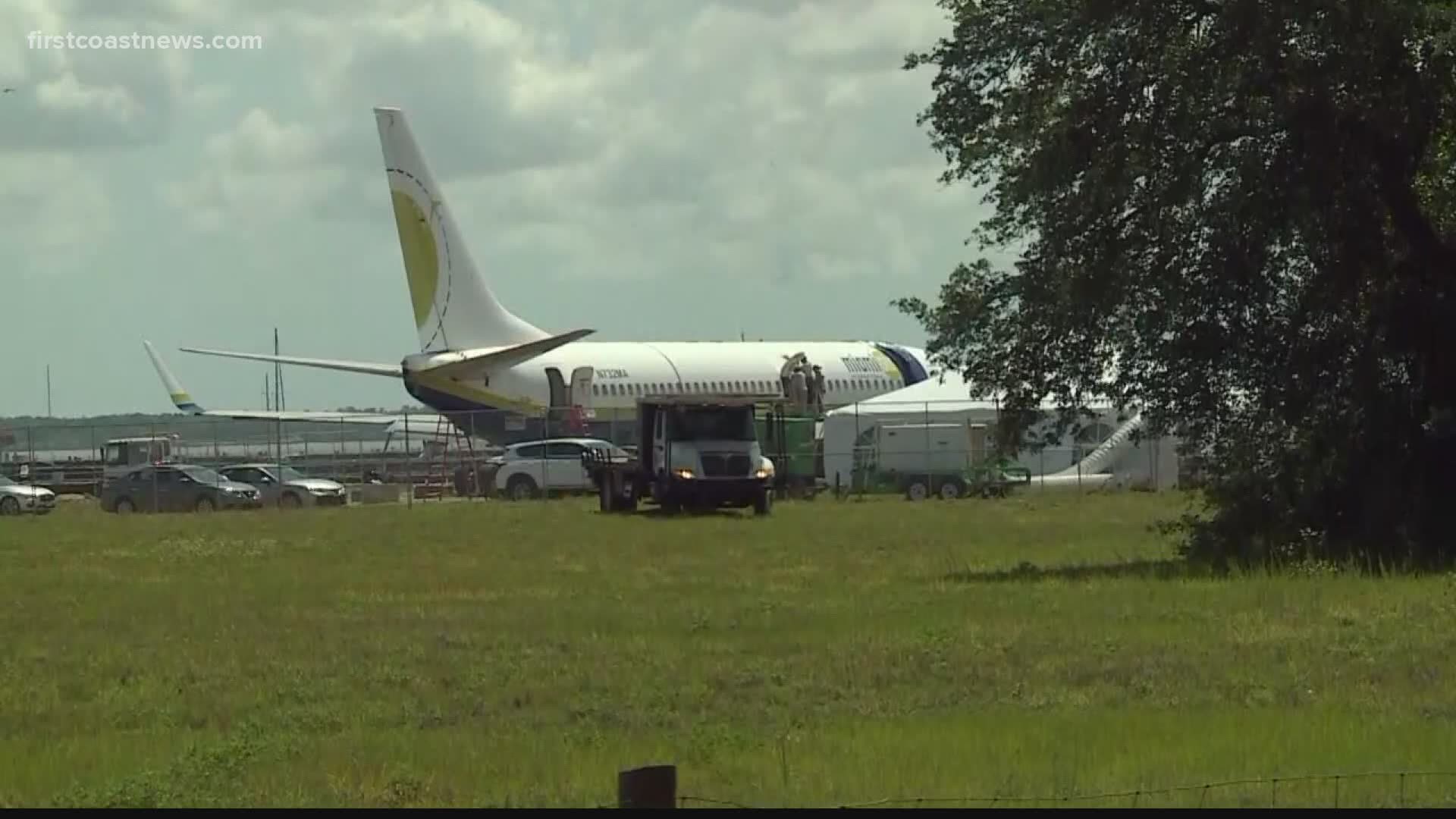JACKSONVILLE, Fla. — One year ago, a miracle happened on the St. Johns River.
A 737 with 143 souls on board overshot the runway at Naval Air Station Jacksonville and came to a rest in the water. Passengers were injured, pets died and it is a night that many will not forget.
“This had the potential to be a mass casualty event,” attorney Galen Bauer recalled.
But no human life was lost. Bauer is a board-certified aviation attorney with Jacksonville firm Sphorer-Dodd, which represents 20 of the flight’s passengers. Many were military members, government employees or their dependents traveling from Guantanamo Bay to Jacksonville.
“It was stormy that night and as the flight approached Jacksonville,” Bauer explained, “the flight crew made several changes to its plan, including the runway.”
The plane failed to stop on the runway, hit a rocky embankment and ended up in over six feet deep water. Rescue crews swarmed the base and river. The severity of injuries varied, but 21 passengers were taken to area hospitals.
“Many of them have physical scars from hitting their heads on the seatback in front of them,” Bauer said.
The On Your Side team was the first to report on air traffic control recordings leading-up to the crash.
JAX APPROACH AIR TRAFFIC CONTROLLER: "Biscayne 293, just talked to Navy Jax tower. He said both runways look pretty bad and pretty (inaudible).
Showing moderate to heavy precipitation east and west of the airfield.
Do you want to try RNAV 28?"
MIAMI AIR INTERNATIONAL FLIGHT 293 PILOT: "28 looks better, and then when I get closer, I check how it is."
From there, the controller asks the pilot if he wants to try Runway 10, and the pilot accepts. While it is not known what elements caused the crash, we know that the plane was approaching the runway at almost 200 miles per hour.
Also, a piece of equipment that could have helped slow it down — the left reverse thruster -- was broken and listed on the maintenance log.
In the days following the crash, the On Your Side team interviewed aviation experts who believe the aircraft was coming in too fast.
The runway pilots chose to land Miami Air 293 on was partially closed – cutting-off roughly 1,700 feet. Analysis of Boeing 737 data indicates there was enough space to land but some pilots question whether it was a good idea to try, given the wet conditions.
“It could have been avoided with better planning from the crew,” independent pilot Robert Katz said.
The identities of the pilots remain closely guarded and a manifest has not been made public. Miami Air International did not respond to multiple calls or emails seeking comment.
“For whatever reason, Miami Air does not want these facts to come under the public light,” Bauer said.
The National Transportation Safety Board contracted Mobro Marine to tow the plane to Green Cove Springs in May 2019 for an investigation. Sources who work at the location where the plane was towed said the plane was disassembled and parts were moved off-site in late 2019.
The NTSB would not offer updates on its status but initially said its investigation would take around 18 months.
Some of what we know is under investigation, confirmed by officials shortly after the crash includes flight data, recordings, maintenance, if the crew was rested, passenger interviews, and industry best practices that will be compared to what pilots did on May 3, 2019.
What is still unknown is the identity of the pilots and their training on the Boeing 737-800.
“For whatever reason, Miami Air does not want these facts to come under the public light,” Bauer said.
Miami Air offered passengers $2,500 in the weeks after the crash. In at least one lawsuit, a passenger seeks $150,000 for damages.
In March, the airline filed for Chapter 11 bankruptcy in a South Florida federal court. Business dropped-off amid the coronavirus pandemic. The bankruptcy has implications for passengers who were on flight 293.
If passengers have not filed a lawsuit, the clock is ticking. Even if they do – there is the possibility the airline may not have to pay damages if found responsible. The process left to the courts.
“We’re confident in how this is going to turn out. That Miami Air is going to be criticized in the NTSB report and that will set us up well with our clients,” Bauer said.


